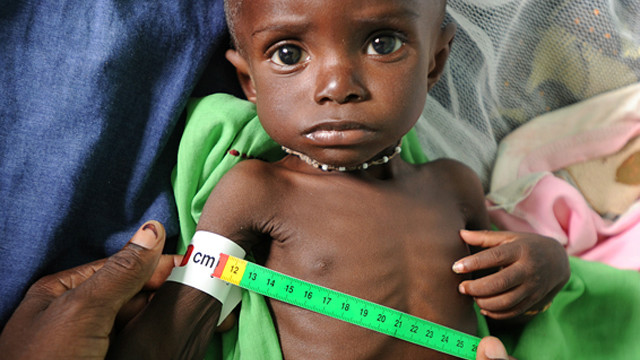
The World Food Program (WFP) says it is struggling with its worst challenge since the Second World War as the UN body works to simultaneously tackle five top-level humanitarian crises.
Large-scale operations by the WFP and other humanitarian organizations are needed to resolve the five crises — in Syria, Iraq, Central African Republic, South Sudan, and the Ebola epidemic in West Africa, said Ertharin Cousin, the head of the UN agency, in an interview with The Associated Press on Friday.
“We have more crises that require surge operations of the humanitarian community, and WFP specifically, since World War II,” Cousin said.
She further noted that the WFP is preparing itself to help four other countries — namely Yemen, Nigeria, Ukraine and Libya — which are at risk of food shortages due to rising political instability, and will need more assistance in the near future.
As the UN’s frontline agency in the fight against hunger, the WFP is continually responding to emergencies. On average, WFP aims to bring food assistance to more than 80 million people in 75 countries.
However, with demands far exceeding donations, the WFP was forced to cut food assistance to six million Syrians living inside and outside the crisis-hit country by 30 percent in January, Cousins said.
She also noted that the agency immediately needs $113 million for Syria and $102 million for other parts of the Middle East in order to continue providing food assistance during the coming months.
In December 2014, the UN body was unable to provide two million Syrian refugees with food for several weeks due to a lack of resources. It resumed food assistance in January after a social media appeal that created funding.
According to Cousin, the WFP is in dire need of financial resources for its Iraq’s programs just ahead of a likely military operation by government forces to retake the country’s second-largest city, Mosul, from ISIS terrorists. Funds for food assistance in Iraq will run out by May 1 unless more donations are received, she said.
Elsewhere in her remarks, Cousin said the WFP is currently providing food for five million people in Yemen “and it could get worse.” Even before the current sociopolitical crisis, more than 40 percent of Yemenis were food insecure, 5 million of them severely food insecure. The ongoing upheavals are “certain to hit the poorest and most vulnerable hardest,” the agency said last week.
According to the latest Food and Agriculture Organization (FAO) statistics from 2014, 805 million people worldwide are undernourished because they don’t have enough food to eat. Almost all of those people — 98 percent — are in developing countries. Food insecurity is also a leading killer of children. Each year, almost 7 million children die before reaching the age of five; malnutrition is a key factor in over a third of these death
